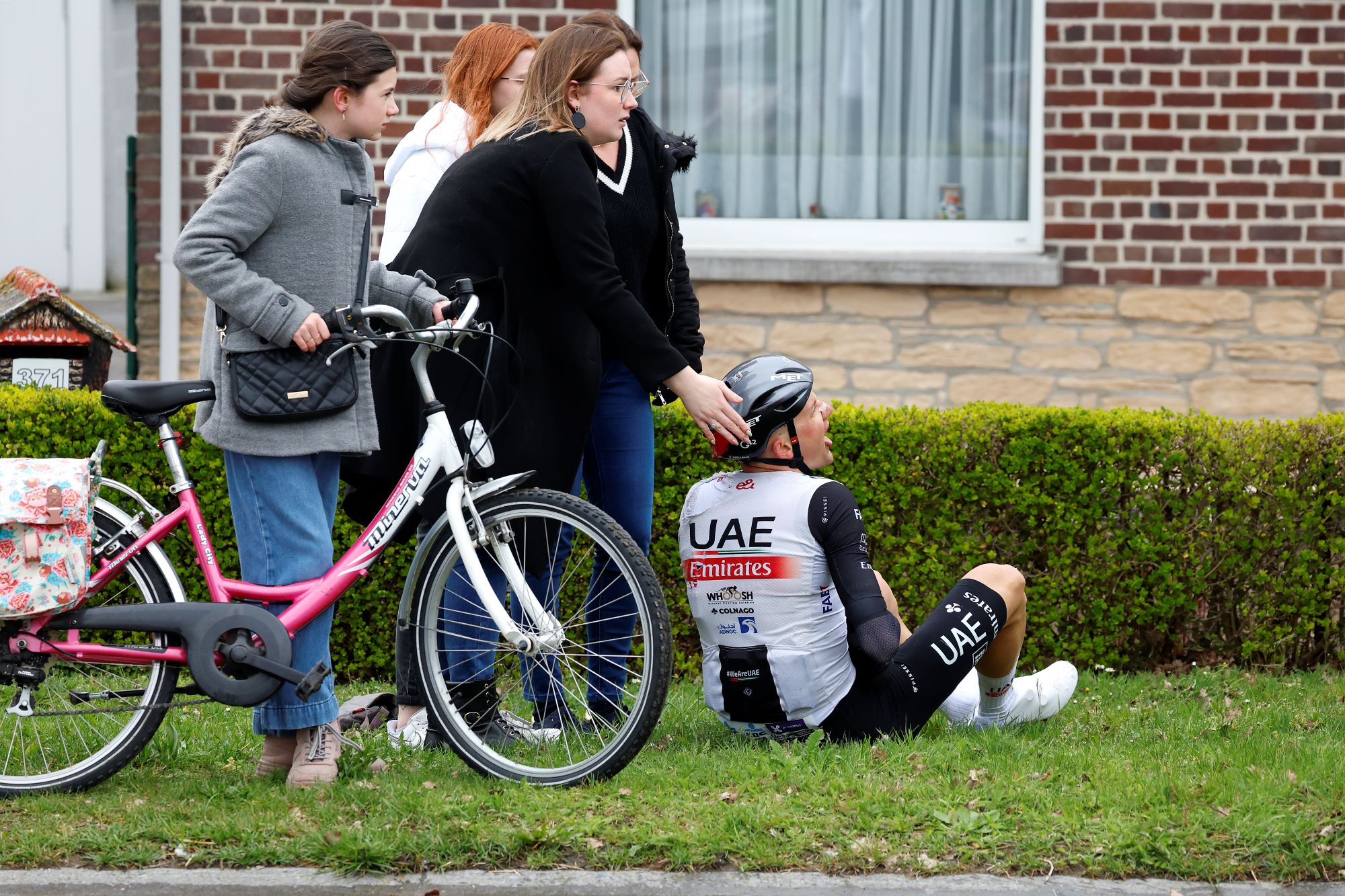
The UCI has confirmed that it is investigating the large crash at the Tour of Flanders, as well as road-blocking tactics used by DSM during the race.
According to Sporza (opens in new tab) and Cyclingnews (opens in new tab), the world governing body is considering further disciplinary action against Bahrain Victorious rider Filip Maciejuk, after his actions caused a massive crash during last Sunday’s race.
Maciejuk was seen moving up along the outside of the peloton at speed with 140 kilometres of the cobbled monument left to race. He then ran out of road, careered through a grass verge and through a ditch filled with standing water. At that point, he lost control of his bike and swayed back across the road into the peloton.
After he touched wheels with one rider, that then sparked off a domino effect, with multiple riders hitting the floor at speed.
Casualties included Tim Wellens of UAE Emirates, who was subsequently forced to abandon with a broken collarbone. Ben Turner (Ineos Grenadiers) broke his arm in the incident, and former Ronde van Vlaanderen winner Peter Sagan (TotalEnergies) was also forced to abandon in what was his final appearance in the race.
Wout van Aert (Jumbo-Visma) was also caught up in the mass crash, although he was able to swiftly remount his bike and continue racing.
After the incident was reviewed by the video referee, Maciejuk was immediately disqualified, and pulled from the race. Despite the fact that he quickly apologised on social media, the UCI is considering further action against him.
“We want to set an example,” UCI coordinator Peter Van Den Abeele told Sporza. “His manoeuvre was absolutely wrong. You can never jeopardise the safety of your fellow riders.”
“Further measures could definitely follow. He will appear before the disciplinary committee. A possible suspension and/or additional fine is then not excluded. We can’t let this pass,” he added.
Riders have regularly used gutters, bike paths, pavements, and even dirt sections along the edge of roads to move up in a race situation. However mass crashes and consequent dangers to the public have forced the UCI to introduce stricter rules, and punishments for those that break them.
“We were criticised when we introduced the rule against riding on a footpath, but the consequences [on Sunday] were significant for riders like Tim Wellens,” Van Den Abeele explained.
“It is a negative trend and we need to get rid of it. We want to set an example and send a signal to the riders that we are all responsible for safety.”
The UCI has also confirmed that it is investigating DSM’s use of road-blocking tactics during Flanders.
With roughly 126 kilometres left to race, the peloton were on to the Korteeker climb. At that point, DSM’s John Degenkolb and four of his teammates massed at the front of the peloton, forcing the race to slow to almost a walking pace. Some riders were forced to unclip, and put a foot down. Suddenly, the DSM riders then accelerated at the front of the peloton after the initial reduction in pace.
While the tactic didn’t influence the overall race, it attracted lots of criticism on social media, including from eventual runner up Mathieu van der Poel.
The Dutch rider posted a video of the incident on his Twitter page with a sarcastic comment that read “chapeau DSM”.
Eddy Merckx also called the behaviour “dangerous” (opens in new tab).
Trek-Segafredo tried a similar move during last Wednesday’s Dwars door Vlaanderen, and the UCI will now investigate the use of the tactic on both occasions.
"We have also noticed this trend," Van Den Abeele said.
"We will analyse that tactic in more detail. Everyone must be able to defend their chances, but this strategy is very far-reaching."
Chapeau @TeamDSM 👏🏻 https://t.co/yJcWCpq6qQApril 2, 2023

